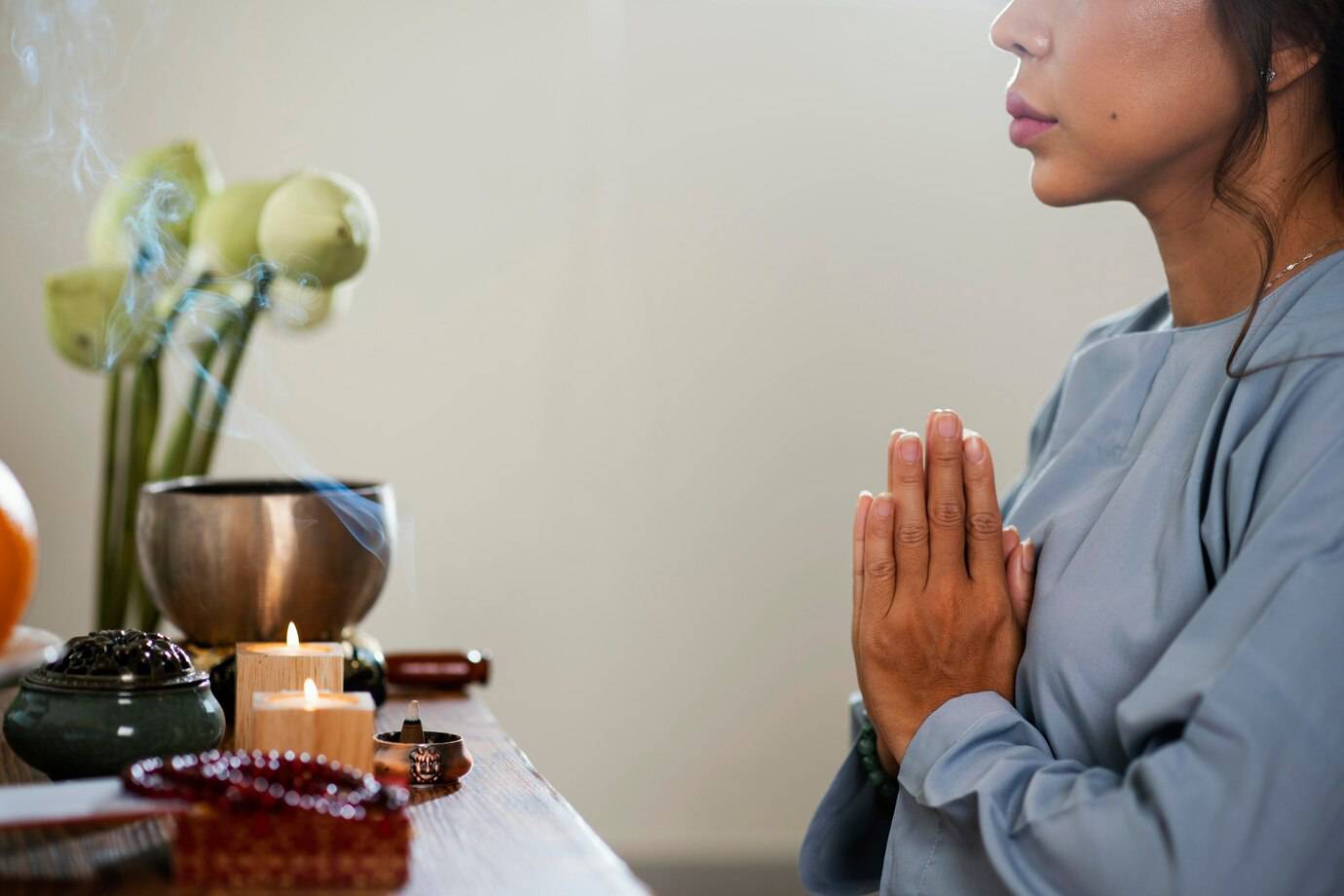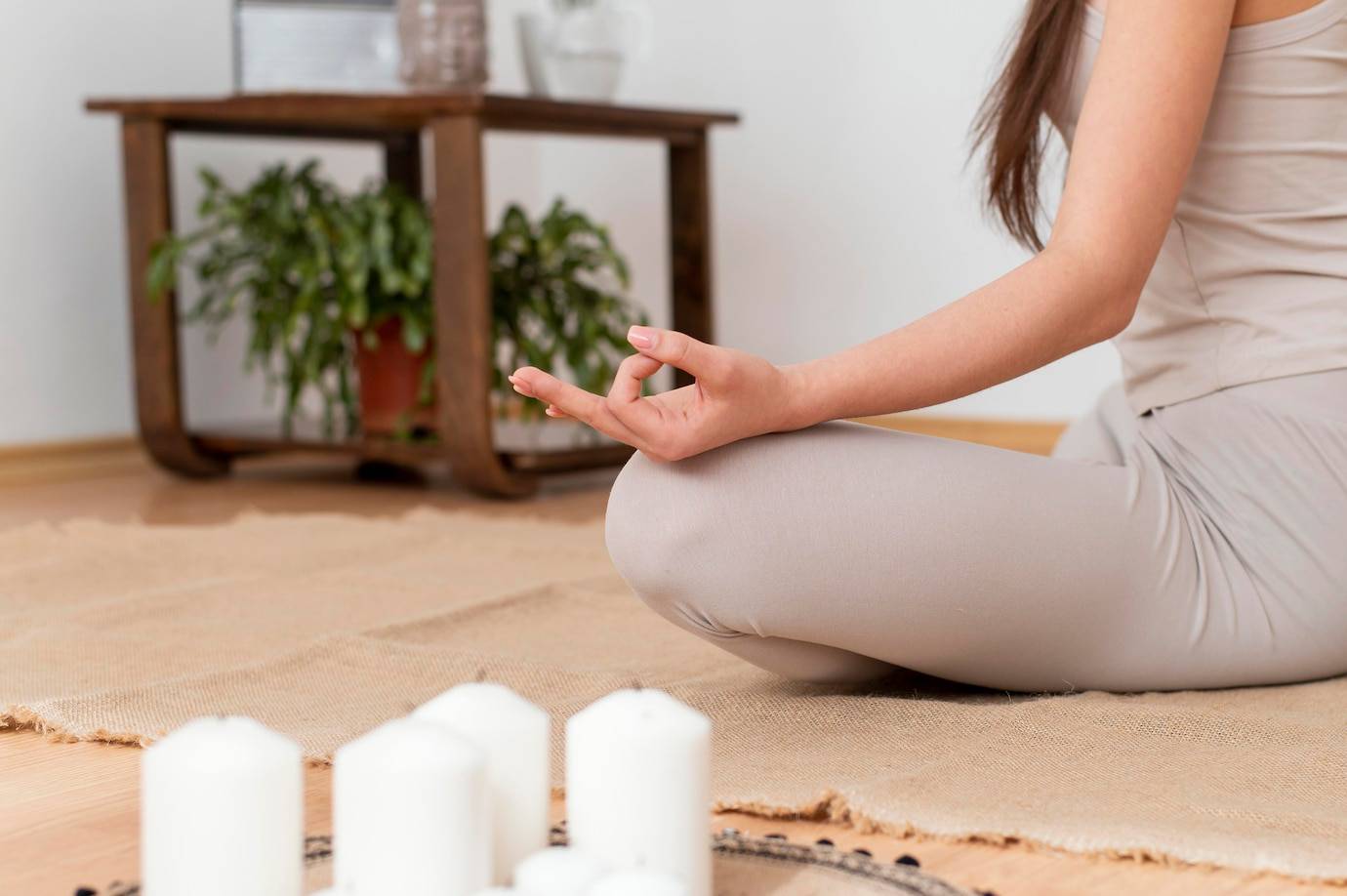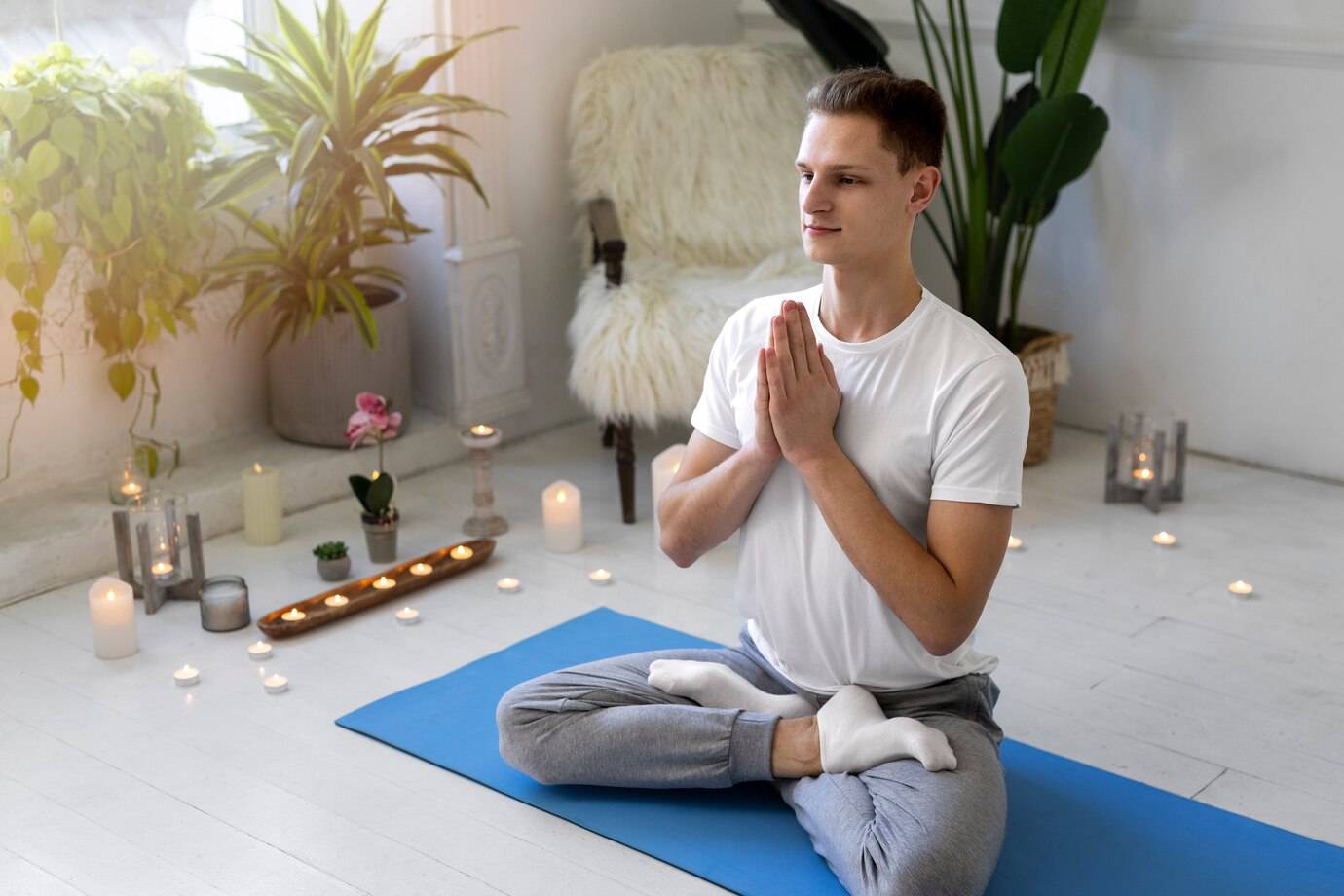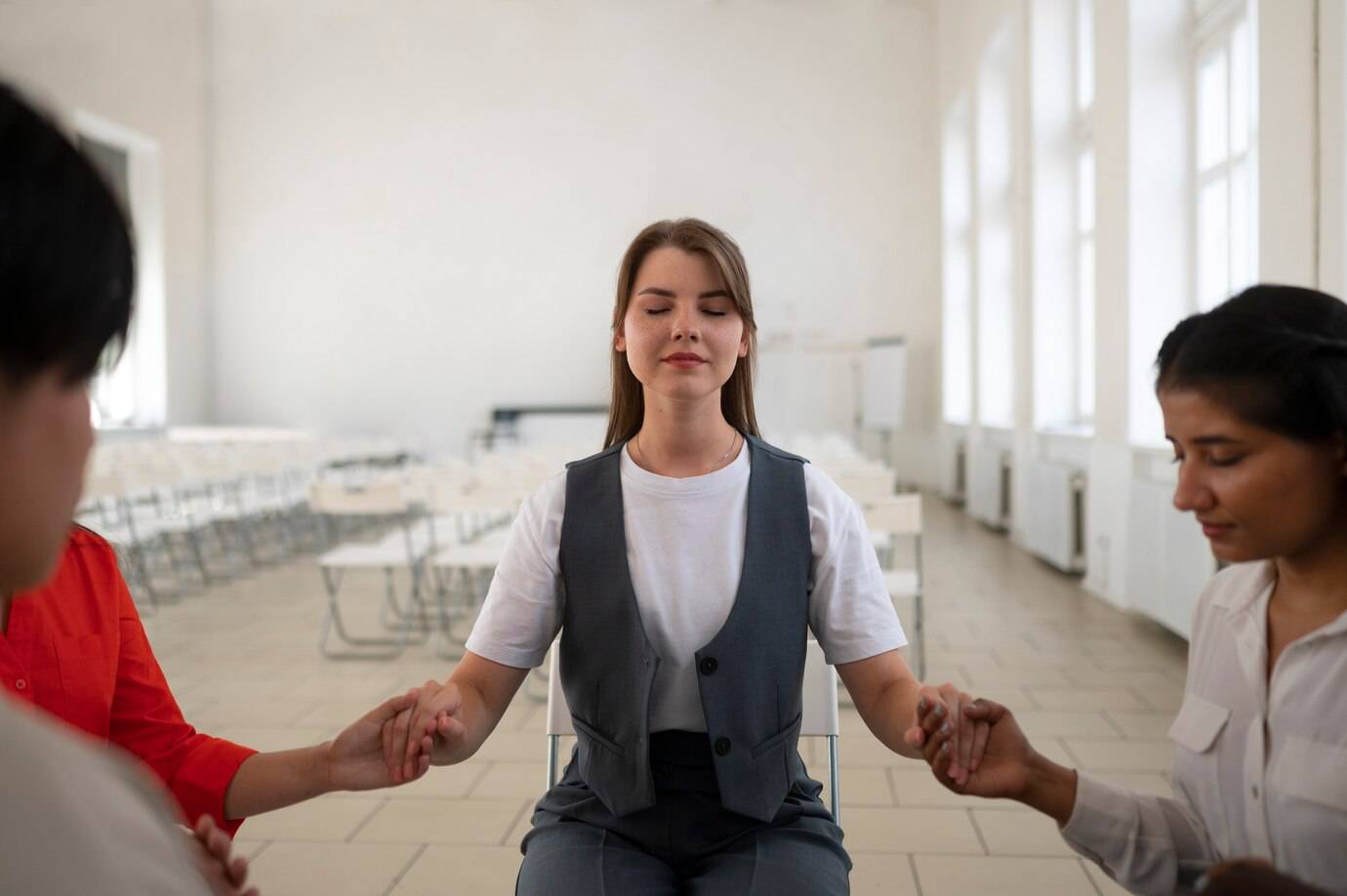
How to Practice Reiki Self-Healing at Home
Feeling drained, emotionally off balance, or physically tense—yet unsure how to realign yourself? That’s where Reiki self-healing comes in. This gentle but strong energy therapy helps you recharge your mind, emotions, and body. You can enjoy it all from the comfort of your home.
Learning Reiki self-healing lets you reduce stress, boost focus, and aid healing. You can do this without using medication or outside help. This guide helps you get started confidently and safely, whether you’re curious or already energy-aware.
Understanding the Core of Reiki Self-Healing

Reiki, meaning “universal life energy” in Japanese, is a form of energy therapy that uses light touch or no touch to guide healing energy through the body. Practised by millions worldwide, Reiki is based on the belief that when your energy flow is balanced, your body’s natural healing systems function optimally.
How Does Reiki Work?
Think of your body as a flowing river of energy. When blockages—caused by stress, trauma, or illness—build up, the flow gets disrupted. Reiki aims to clear these energy blockages, allowing life force energy (chi, prana) to circulate freely.
“Reiki treats the whole person—body, emotions, mind and spirit—creating many beneficial effects that include relaxation and feelings of peace.” — International Centre for Reiki Training.
Quick Guide Summary: Reiki Self-Healing at a Glance
- Create a quiet, calming environment
- Ground yourself with breathwork
- Set your intention clearly
- Activate Reiki (if attuned) or follow the visualisation if not
- Scan your body with your hands or mind’s eye
- Place hands on or near key chakra areas
- Hold each position for 3–5 minutes
- End the session with gratitude and hydration
Pro Tip: Keep your hands gently cupped instead of flat during practice — this helps energy flow more naturally and keeps your wrists relaxed.
Step-by-Step Guide: How to Practise Reiki Self-Healing at Home
1. Set Up a Peaceful Space
Choose a place where you won’t be disturbed. Light a candle, play soft ambient music, or diffuse essential oils like lavender or sandalwood to soothe your senses.
2. Ground Yourself
Sit or lie down comfortably. Close your eyes. Take 5–7 deep belly breaths, inhaling through your nose, holding for 3 seconds, and exhaling slowly. Feel your body settling into the present moment.
3. Set an Intention
This could be as simple as: “I invite healing and peace into my body,” or “I release what no longer serves me.” The clearer your intention, the more focused your session becomes.
4. Activate Reiki Energy
If you are Reiki-attuned, rub your hands together to warm them, and silently say your Reiki symbols if applicable.
Not attuned yet? No problem. Visualise a white or golden light filling your body and moving through your hands as you begin.
5. Perform a Body Scan
Gently place your hands over your body, starting from the crown of your head and working down toward your feet. Tune into sensations, emotions, or tension points.
6. Work Through the Chakras
Focus on these 7 energy centres:
- Crown (Top of head): Clarity, spiritual connection
- Third Eye (Forehead): Intuition, imagination
- Throat: Communication, truth
- Heart: Compassion, love
- Solar Plexus: Confidence, motivation
- Sacral: Creativity, emotions
- Root (Base of spine): Safety, grounding
Hold each area with your palms for 3–5 minutes or until you feel a shift—like warmth, tingling, or deep calm.
7. Close the Session
Finish with your hands in a prayer position (Gassho mudra). Say thank you to yourself, to Reiki energy, to the universe. Drink a glass of water and journal your experience.
Important: Avoid practising Reiki directly after a heavy meal or intense emotional encounter. Give your body and energy time to settle before you begin.
Important Things to Remember

- Start small – Even a 10-minute session can be impactful.
- Don’t chase sensations – Trust the process even if you feel “nothing.” Energy works subtly.
- Consistency matters – Daily practice builds sensitivity and clarity.
- Cleanse your space regularly – Use sage, incense, or salt to keep energy fresh.
“The quieter you become, the more you are able to hear.” — Rumi
Best Practices & Additional Insights
- Morning sessions help set a calm, energised tone for the day.
- Evening sessions can aid in emotional release and sleep quality.
- Consider incorporating crystals like amethyst (calm), rose quartz (self-love), or black tourmaline (protection).
- Use a Reiki journal to track patterns, insights, or emotional shifts over time.
For deeper energy practices, explore our guide on how to create a personalised sleep routine for better rest or discover top yoga poses for anxiety.
Secret Tip: Whispering your intention aloud three times before you start can anchor the energy more deeply and enhance intuitive flow during the session.
Frequently Asked Questions for Reiki Self-Healing at Home
Do I need a Reiki attunement to practise self-healing?
Not strictly. While attunement from a Reiki Master deepens your practice, visualisation and intention can still offer benefits. Many begin with informal practice before seeking formal training.
How often should I practise Reiki self-healing?
Start with 3–4 sessions a week, then adjust to your lifestyle. Daily short sessions can be more effective than occasional long ones.
Can I practise Reiki to relieve emotional or mental stress?
Absolutely. Reiki works on all layers—physical, emotional, mental, and spiritual—and can bring deep emotional releases over time.
Can I practise Reiki self-healing when I’m sick or tired?
Yes, Reiki is especially helpful during illness or fatigue—it supports your body’s natural healing processes and helps restore energy gently.
What should I do if my mind keeps wandering during a session?
That’s completely normal. Simply return your focus to your breath or your hands, without judgment.
Is it okay to fall asleep during Reiki self-healing?
Absolutely. Sleep can be a sign that your body is deeply relaxing and receiving what it needs.
How do I know if Reiki is working?
You might feel warmth, tingling, calmness, or nothing at all. Trust the process; the effects often unfold subtly over time.
Can I combine Reiki with other healing methods?
Yes, Reiki works well alongside yoga, meditation, breathwork, or traditional medical care—always follow what feels supportive for you.
Conclusion: Your Daily Dose of Inner Peace with Reiki Self-Healing

Practising Reiki self-healing at home is more than a trend. It’s a powerful tool. It helps you connect with your inner wisdom, restore balance, and find peace. By following the steps above, you’re already tuning into the natural healing intelligence within you.
Begin your Reiki journey today. Try your first self-healing session and journal how you feel afterwards. Want to go deeper? Read Exploring Reiki: Energy Healing for Mind and Body


